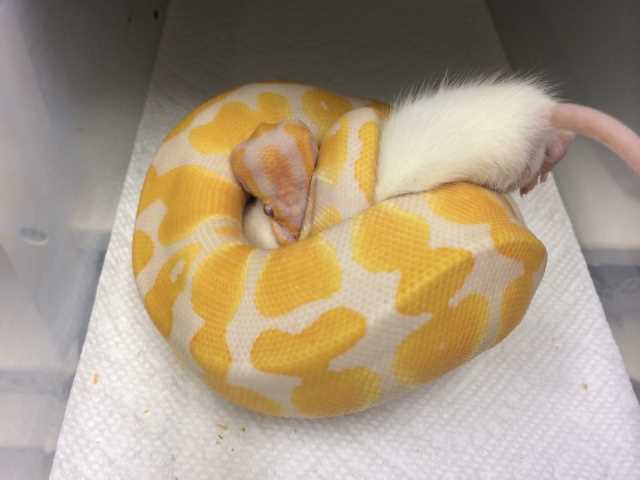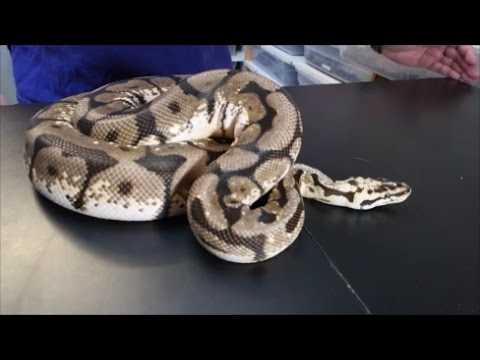One reason why your ball python may not be eating is due to stress. Snakes are sensitive creatures, and any changes in their environment or routine can cause them to feel stressed. This could include things like moving to a new enclosure, introducing new tank mates, or even just changes in lighting or temperature. If your snake is stressed, it may refuse to eat until it feels more secure and comfortable in its surroundings.
Common Reasons Why Your Ball Python Isn’t Eating
If your ball python is not eating, it can be a cause for concern. Ball pythons are generally good eaters, but there are several common reasons why they may refuse food.
1. Stress or Anxiety
2. Inadequate Temperature or Humidity
Ball pythons require specific temperature and humidity levels to digest their food properly. If the temperature in the enclosure is too low or the humidity is too high or too low, it can cause your ball python to lose their appetite. Ensure that the temperature is maintained within the recommended range of 78-82°F (25-28°C) and the humidity is kept between 50-60%.
3. Recent Feeding or Shedding
If your ball python has recently eaten a large meal or is going through the shedding process, they may refuse to eat. During these times, their digestive system may not be ready for another meal or they may be experiencing discomfort from shedding. It’s best to give them some time to recover before attempting to feed them again.
4. Seasonal Changes
5. Illness or Parasites
If your ball python’s lack of appetite persists for an extended period of time and they are losing weight, it could be a sign of an underlying health issue such as an illness or parasites. In such cases, it is essential to consult a veterinarian who specializes in reptiles to diagnose and treat the problem.
Lack of suitable environment
One of the reasons why your ball python is not eating could be due to a lack of a suitable environment. Ball pythons require a specific set of conditions in order to thrive and feel comfortable enough to eat.
Firstly, make sure that your python’s enclosure is the appropriate size. If the enclosure is too small, it can cause stress and anxiety, which can lead to a loss of appetite. Ball pythons should have enough space to stretch out fully and move around.
The substrate or bedding used in the enclosure can also affect your ball python’s appetite. It is recommended to use a substrate that mimics their natural environment, such as coconut husk, cypress mulch, or reptile bark. Avoid using substrates that can cause impaction, such as sand or gravel.
By ensuring that your ball python has a suitable environment, you can help improve their appetite and overall well-being.
Why is My Ball Python Not Eating

1. Stress or Anxiety
Stress or anxiety can be a major factor contributing to a ball python not eating. This can be caused by many factors, including changes in the environment, such as moving to a new enclosure or being introduced to new tank mates. Additionally, handling the snake too frequently or roughly can also cause stress and affect its appetite.
2. Lack of Suitable Environment
Another common reason for a ball python not eating is a lack of a suitable environment. Ball pythons require specific conditions to feel secure and comfortable enough to eat. This includes having a properly sized enclosure with secure hiding spots and the right temperature and humidity levels. If any of these factors are off, it can cause the snake to refuse food.
3. Health Issues
If your ball python consistently refuses to eat and shows other signs of illness, such as weight loss, lethargy, or respiratory problems, it is crucial to consult a veterinarian. Health issues, such as infections or parasites, could be the underlying cause for the snake’s lack of appetite and need to be addressed by a professional.
Steps to Take When Your Ball Python Refuses to Eat
If your ball python is not eating, there are several steps you can take to encourage it to start feeding again:
- Check the temperature and humidity levels in the enclosure to ensure they are within the appropriate range for a ball python.
- Offer pre-killed prey items or try different types of food, such as mice or rats, to entice the snake’s appetite.
- Reduce stress by providing a quiet and undisturbed environment.
- If the ball python still refuses to eat after trying these steps, it may be necessary to consult with a reptile veterinarian for further advice and examination.
My Ball Python is not eating: why and what to do

1. Assess the temperature and humidity
Ball pythons require specific temperature and humidity levels to facilitate proper digestion and appetite. Ensure that the temperature gradient in the enclosure is suitable, with a warm side ranging between 88-92°F (31-33°C) and a cooler side around 78-80°F (25-27°C). The humidity should be maintained at around 50-60%. Incorrect temperature or humidity levels can lead to a loss of appetite.
2. Check the enclosure setup
3. Consider recent changes or stressors
Think about any recent changes in the ball python’s environment or handling that may have caused stress. Moving to a new enclosure, changes in routine, or excessive handling can all contribute to a loss of appetite. Give your python some time to adjust and minimize any unnecessary stressors.
4. Evaluate feeding methods
Review your feeding methods to ensure they are appropriate. Consider feeding your ball python in a separate feeding enclosure to minimize any stress associated with the presence of your hand. Using tongs or forceps to offer the prey item can also help simulate natural hunting behaviors and entice your python to eat.
5. Consult a veterinarian
If your ball python continues to refuse food for an extended period or shows other signs of illness or discomfort, it is essential to seek veterinary assistance. A veterinarian specializing in reptiles can conduct a thorough examination and provide guidance on any necessary treatment.
Remember, it is not uncommon for ball pythons to go through short periods of fasting. However, if the lack of appetite persists for more than a few weeks or is accompanied by other concerning symptoms, it is crucial to take appropriate action to ensure the health of your pet.
Reviewing the Enclosure Setup
Ensuring that your ball python has a suitable enclosure setup is crucial for its overall well-being and appetite. If your ball python is not eating, it could be due to a variety of factors related to its environment. Here are some important aspects to consider when reviewing the enclosure setup:
Temperature and humidity
Ball pythons require specific temperature and humidity levels to thrive. A temperature gradient should be established within the enclosure, with a warmer side between 88-92°F (31-33°C) and a cooler side around 78-82°F (25-28°C). Use a reliable thermometer to monitor the temperatures accurately.
Humidity levels should be maintained between 50-60% for juvenile ball pythons and 40-50% for adults. A hygrometer can help you monitor and adjust humidity levels accordingly. Provide a humid hide or moist substrate to ensure proper shedding.
Lighting and hiding spots
While ball pythons are primarily nocturnal and do not require UVB lighting, providing a suitable light cycle can help regulate their natural behavior and circadian rhythm. Use a low-wattage bulb or a ceramic heat emitter to mimic a day and night cycle.
Ensure that your ball python has adequate hiding spots to feel secure and reduce stress. Place at least two hides, one on the warmer side and one on the cooler side of the enclosure. These hides can be half logs, caves, or commercially available snake hides.
Substrate and cleanliness
Choosing the right substrate is essential for the health of your ball python. Some suitable options include coconut husk, cypress mulch, or paper towels. Avoid substrates that can be ingested and cause impaction.
Regularly clean and maintain the enclosure to prevent the buildup of waste and bacteria. Spot clean any soiled areas and perform a complete enclosure clean every few months. This will help prevent respiratory and other health issues.
Enrichment and stimulation

Providing environmental enrichment and stimulation for your ball python can help promote feeding responses. Offer a variety of appropriately sized hides, branches, and other climbing structures to create a stimulating and naturalistic environment.
Occasionally introducing new objects or rearranging the enclosure can also provide mental stimulation for your ball python. However, avoid making drastic changes or disturbing your snake too frequently, as this can cause stress.
| Reasons Why Your Ball Python Isn’t Eating | What to Do |
|---|---|
| Lack of suitable environment | Review and adjust temperature, humidity, lighting, hiding spots, substrate, cleanliness, and enrichment. |
| Stress or anxiety | Ensure a calm and secure environment, handle your snake gently, and avoid sudden loud noises or disturbances. |
| Health issues or underlying medical conditions | If the feeding problem persists or is accompanied by other symptoms, consult a reptile veterinarian for a thorough examination. |
| Pre-shed or post-shed refusal | Ball pythons may refuse to eat before shedding or for a short period after shedding. Monitor their behavior and resume feeding once they are healthy and active again. |
| Mistakes in handling or feeding technique | Ensure that you are using proper handling and feeding techniques, offering appropriately sized prey, and keeping the feeding area stress-free. |
By reviewing and optimizing the enclosure setup for your ball python, you can create a more suitable and comfortable environment that encourages feeding and overall well-being.

I’m Lena Adams—a product of an unconventional upbringing in the African wilderness. My father, a daring explorer of African wildlife, sparked my fascination with reptiles, a passion that intertwined with the tragic loss of my mother during an expedition, leaving an indelible mark on my life. Driven to understand the creatures that captivated my parents, I embarked on my journey, sharing insights about reptiles, frogs, and lizards on my website. Through my explorations and conservation efforts, I honour my family’s legacy while seeking connections—to the creatures, nature, and the mother whose presence I yearn to understand.
